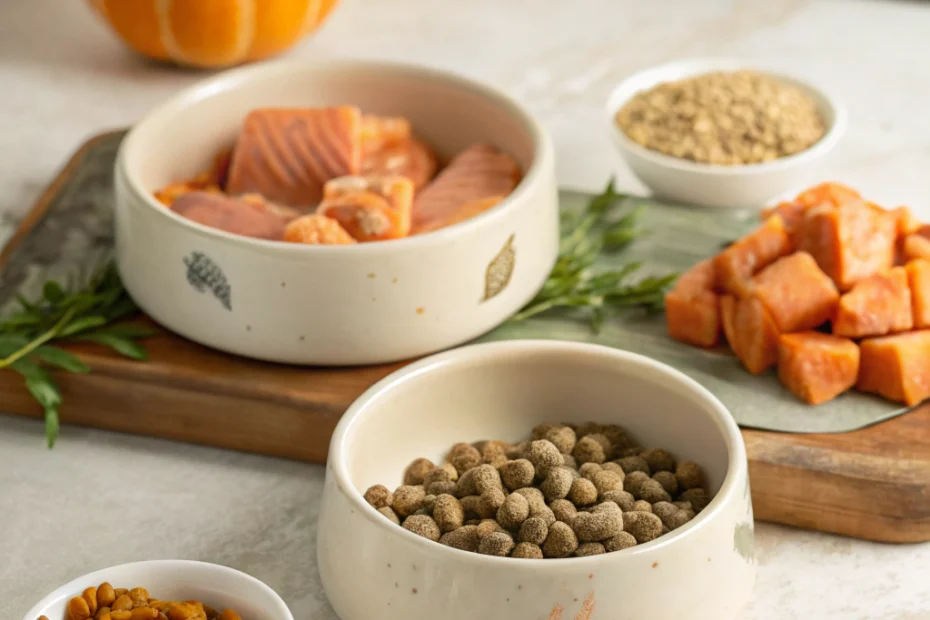At-a-Glance
Raised cat food and water bowls are becoming a popular choice among cat owners who are looking to enhance their pet’s dining experience. These bowls are elevated off the ground, which may help in reducing strain on your cat’s neck and joints. They are commonly used to support better digestion and can be particularly beneficial for older cats or those with arthritis. This guide will walk you through the benefits, selection tips, and setup advice for raised bowls, ensuring you make an informed decision for your feline friend.
How to Choose
When selecting raised cat food and water bowls, consider the following factors to ensure they meet your cat’s needs:
- Height: The bowl’s height should be appropriate for your cat’s size. A bowl that is too high or too low can negate the benefits of elevation.
- Material: Look for bowls made from safe, durable materials like stainless steel or ceramic. These are easy to clean and less likely to harbor bacteria.
- Stability: Ensure the stand or base of the bowl is stable to prevent tipping, which can cause spills and messes.
- Design: Some cats may prefer a certain bowl shape or depth. Consider your cat’s eating habits when choosing a design.
By keeping these factors in mind, you can select a raised bowl that may help improve your cat’s feeding experience.
Safety & Setup
Setting up your raised cat food and water bowls correctly is crucial for maximizing their benefits. Here are some safety and setup tips:
- Secure Placement: Place the bowls on a non-slip mat to prevent them from sliding around during use.
- Regular Cleaning: Clean the bowls regularly to maintain hygiene and prevent the buildup of bacteria.
- Monitor Usage: Observe your cat’s behavior with the new setup. If your cat seems uncomfortable, you may need to adjust the height or position.
- Gradual Transition: If your cat is used to traditional bowls, introduce the raised bowls gradually to allow them to adjust.
These steps can help ensure that your cat uses the raised bowls safely and comfortably.
Core Pillars
The core pillars of using raised cat food and water bowls revolve around comfort, health, and convenience:
- Comfort: Raised bowls can reduce the strain on your cat’s neck and joints, making mealtime more comfortable.
- Health: Elevating the bowls may support better digestion by allowing food to travel more easily down the esophagus.
- Convenience: Raised bowls can help keep feeding areas cleaner by reducing spills and messes.
These benefits make raised bowls a thoughtful addition to your cat’s feeding routine.
Placement & Environment Tips
Proper placement of raised cat food and water bowls can enhance their effectiveness. Consider the following tips:
- Quiet Location: Place the bowls in a quiet area of your home to minimize distractions during mealtime.
- Away from Litter Box: Keep the feeding area separate from the litter box to maintain hygiene and comfort.
- Consistent Spot: Choose a consistent spot for the bowls to help your cat establish a routine.
- Temperature Control: Ensure the feeding area is at a comfortable temperature, avoiding drafts or direct sunlight.
These placement tips can help create a pleasant dining environment for your cat.
Comparison with Alternatives
When considering raised cat food and water bowls, it’s helpful to compare them with traditional bowls and other alternatives:
- Traditional Bowls: While traditional bowls are commonly used, they may not offer the ergonomic benefits of raised bowls.
- Automatic Feeders: Automatic feeders provide convenience but may not address the physical comfort that raised bowls offer.
- Slow Feed Bowls: Slow feed bowls can help prevent overeating but may not provide the same neck and joint relief.
Understanding these differences can help you choose the best option for your cat’s needs.
FAQs
Here are some common questions about raised cat food and water bowls:
Are raised bowls suitable for all cats?
Raised bowls can be beneficial for many cats, especially older ones or those with joint issues. However, it’s important to observe your cat’s comfort and consult with a veterinarian if you have concerns.
How high should the bowls be?
The ideal height depends on your cat’s size. Generally, the top of the bowl should be at the same level as your cat’s lower chest.
Can raised bowls help with vomiting?
While raised bowls may help reduce vomiting by promoting better digestion, it’s essential to consult a veterinarian if your cat frequently vomits.
What to Do Next
Now that you have a better understanding of raised cat food and water bowls, consider evaluating your cat’s current feeding setup. Observe their eating habits and comfort levels to determine if a change might be beneficial. If you decide to make the switch, remember to introduce the new bowls gradually and monitor your cat’s response. Always prioritize your cat’s health and comfort, and consult with a veterinarian for personalized advice.
Disclaimer: Always consult your veterinarian for personalized advice regarding your cat’s health.
